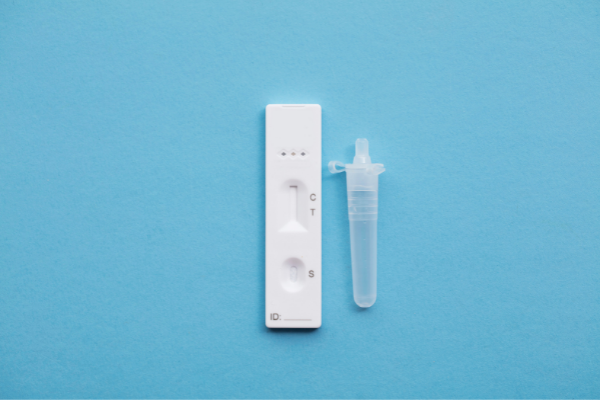Ministers have been tasked with developing “robust contingency plans” for workplace absences, as the government warned rising cases could see up to a quarter of staff off work.
According to BBC News, public sector leaders have been asked to prepare for “worst case scenarios” of 10%, 20% and 25% absence rates, the Cabinet Office said.
The UK saw record numbers of daily cases over the festive period. Transport, the NHS and schools have already seen the effect of absences.
Rising case numbers have led to large numbers self isolating and being unable to go to work. This has particularly affected industries where staff are unable to work from home.
Cabinet Office Minister Steve Barclay is chairing regular meetings with ministers to assess how the spread of the Omicron variant is affecting workforces and supply chains, the Cabinet Office said.
The prime minister had asked ministers working with their respective sectors to test preparations and contingency plans to limit disruption, it explained.
Mr. Barclay said the highly transmissible Omicron variant meant businesses and public services “will face disruption in the coming weeks, particularly from higher than normal staff absence”.
However, his department said that, so far, disruption caused by Omicron has been controlled in “most parts of the public sector.”
Self-isolation rules
People who test positive for COVID-19 must self-isolate for at least seven days in England, Wales and Northern Ireland. Two negative lateral flow results, 24 hours apart, are required to end self isolation – the first no earlier than day six.
In Scotland, positive cases must isolate for the full 10 days.
Unvaccinated contacts of positive cases must also isolate for 10 days in all parts of the UK.
Some have called for a US-style self-isolation system to be introduced, where people only have to quarantine for five days, but the UK Health Security Agency (UKHSA) said that doing so would be counterproductive and could actually worsen staff shortages if it led to more people being infected.
Explaining its reasoning in a blog post, it said the two systems were not like for like. In the UK, the self-isolation “clock” begins when the person experiences symptoms or receives a positive test – whichever is first. But in the US, self isolation begins only after a positive test – which may be some days after symptoms first appear.
On day six, the UKHSA says its modelling suggests 10-30% of people will still be infectious, depending on how quickly they get their test result after developing symptoms.
It says ending self isolation after seven days with two negative lateral flow tests gives a similar level of protection to self-isolating for 10 days, when 5% of people will still be infectious.
The situation will be kept under review, the UKHSA says, but it believes current rules are the “optimal approach at present”.
This is valid as of 5th January 2022.
Ministers have been tasked with developing “robust contingency plans” for workplace absences, as the government warned rising cases could see up to a quarter of staff off work.
According to BBC News, public sector leaders have been asked to prepare for “worst case scenarios” of 10%, 20% and 25% absence rates, the Cabinet Office said. The UK saw record numbers of daily cases over the festive period. Transport, the NHS and schools have already seen the effect of absences. Rising case numbers have led to large numbers self isolating and being unable to go to work. This has particularly affected industries where staff are unable to work from home. Cabinet Office Minister Steve Barclay is chairing regular meetings with ministers to assess how the spread of the Omicron variant is affecting workforces and supply chains, the Cabinet Office said. The prime minister had asked ministers working with their respective sectors to test preparations and contingency plans to limit disruption, it explained. Mr. Barclay said the highly transmissible Omicron variant meant businesses and public services “will face disruption in the coming weeks, particularly from higher than normal staff absence”. However, his department said that, so far, disruption caused by Omicron has been controlled in “most parts of the public sector.” Self-isolation rules
People who test positive for COVID-19 must self-isolate for at least seven days in England, Wales and Northern Ireland. Two negative lateral flow results, 24 hours apart, are required to end self isolation - the first no earlier than day six. In Scotland, positive cases must isolate for the full 10 days. Unvaccinated contacts of positive cases must also isolate for 10 days in all parts of the UK. Some have called for a US-style self-isolation system to be introduced, where people only have to quarantine for five days, but the UK Health Security Agency (UKHSA) said that doing so would be counterproductive and could actually worsen staff shortages if it led to more people being infected. Explaining its reasoning in a blog post, it said the two systems were not like for like. In the UK, the self-isolation “clock” begins when the person experiences symptoms or receives a positive test - whichever is first. But in the US, self isolation begins only after a positive test - which may be some days after symptoms first appear. On day six, the UKHSA says its modelling suggests 10-30% of people will still be infectious, depending on how quickly they get their test result after developing symptoms. It says ending self isolation after seven days with two negative lateral flow tests gives a similar level of protection to self-isolating for 10 days, when 5% of people will still be infectious. The situation will be kept under review, the UKHSA says, but it believes current rules are the “optimal approach at present”. This is valid as of 5th January 2022.[ssba-buttons]
You May Also Be Interested In
EPA announces $1.4 million settlement over alleged chemical accident prevention violations
Fines issued after dockyard scaffolder seriously hurt
Landlord jailed after putting ‘lives and safety of residents and employees at risk’
